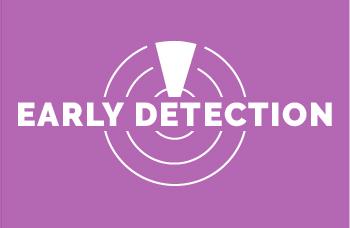Joe Biden’s Prostate Cancer Diagnosis Sheds Light on a Common Men’s Health Issue
05 May, 2025
On May 18, 2025, the office of former President Joe Biden announced that he has been diagnosed with an aggressive form of prostate cancer that has spread to his bones. This news has sparked concern and conversation across the country, not just about Biden’s health, but about prostate cancer itself—a disease that touches millions of families.
Understanding Prostate Cancer
Prostate cancer is the most common cancer among men in the United States, after skin cancer. The prostate is a small gland in men, located below the bladder, that helps produce semen. Most prostate cancers grow slowly and may not cause significant problems, but some—like in Biden’s case—are more aggressive and can spread beyond the prostate to other parts of the body, such as the bones.
- About 1 in 8 men will be diagnosed with prostate cancer in their lifetime.
- It is the second leading cause of cancer death among American men, after lung cancer.
- The risk increases with age, especially after age 50.
Joe Biden’s Diagnosis: What We Know
Biden, who is 82, sought medical attention after experiencing urinary symptoms. Doctors discovered a nodule on his prostate, and further tests confirmed that the cancer had metastasized (spread) to his bones. His cancer is described as high-grade, with a Gleason score of 9 out of 10, indicating an aggressive form. However, it is hormone-sensitive, which means certain treatments may still be effective.
Biden and his family are currently exploring treatment options with his healthcare team, which could include hormone therapy, chemotherapy, and radiation.
What Is a Gleason Score?
The Gleason score is a system doctors use to describe how aggressive a prostate cancer is, based on how the cancer cells look under a microscope. After a prostate biopsy, a pathologist examines the tissue and gives two grades, each from 1 to 5. The first grade is for the most common pattern of cells, and the second is for the next most common pattern. These two numbers are then added together to get the Gleason score.
A lower grade (like 1 or 2) means the cancer cells look more like normal prostate cells and are less likely to grow or spread quickly. A higher grade (like 4 or 5) means the cells look very different from normal cells and are more likely to be aggressive.
The Gleason score usually ranges from 6 (3+3) to 10 (5+5) for cancer. The higher the score, the more aggressive the cancer is likely to be and the greater the chance it could spread
Symptoms and Early Detection
Prostate cancer often doesn’t cause symptoms in its early stages. When symptoms do appear, they may include:
- Difficulty urinating (weak stream, frequent urination, especially at night)
- Pain or burning during urination
- Blood in urine or semen
- Persistent pain in the back, hips, or pelvis
Many of these symptoms can also be caused by non-cancerous conditions, but it’s important to talk to your doctor if you experience them.
Some people may choose to get screened for prostate cancer with a PSA test, which is a simple blood test that measures the level of prostate-specific antigen (PSA), a protein produced by the prostate gland, in the blood. PSA is made by both normal and cancerous prostate cells, so it’s normal for all men to have some PSA in their blood.
Higher levels of PSA can be a sign of prostate cancer, but they can also be caused by other things, such as an enlarged prostate (benign prostatic hyperplasia), prostatitis (inflammation or infection of the prostate), recent ejaculation, vigorous exercise, or even a recent prostate exam.
There is no single “normal” PSA level. And a diagnosis of prostate cancer is never made on PSA alone. If your PSA is high, your doctor may recommend more tests, such as a repeat PSA, a digital rectal exam, or a prostate biopsy.
Men at average risk may consider screening for prostate cancer with a PSA test starting at age 50, and those who are at higher risk, such as Black men or those with a family history of prostate cancer, may consider starting screening at age 45.
Early detection is key. When caught early, prostate cancer is highly treatable, and most men survive the disease.
Treatment and Outlook
While metastatic prostate cancer (cancer that has spread) is not considered curable, many men live for years with the disease thanks to advances in treatment. Hormone therapy can slow the cancer’s growth, and new therapies are being developed all the time. According to experts, even with aggressive, metastatic prostate cancer, it’s possible to live five to ten years or longer.
In his first public remarks after the diagnosis, Biden said, “Cancer touches us all... We are strongest in the broken places,” expressing gratitude for the outpouring of support. His experience is a reminder that cancer is a challenge faced by many, and that support, awareness, and early action can make a difference.
What Can You Do?
Stay informed: Learn about prostate cancer risks and symptoms.
Talk to your doctor: Discuss screening, especially if you’re over 50 or have risk factors.
Support each other: Whether you’re a patient, survivor, or family member, sharing stories and information can help others. You can find support and additional information at https://zerocancer.org/.
Prostate cancer is common, but together, through awareness and action, we can improve outcomes for our community.
You May Also Like

2025 Prostate Cancer Awareness Materials
09.03.2025
Prostate cancer is the most commonly diagnosed cancer among men in Nevada (excluding skin cancer) and the second leading cause of cancer death for

September Cancer Awareness Quick Facts
08.15.2023
September is a busy cancer awareness month recognizing prostate, uterine, ovarian, leukemia, lymphoma, thyroid and childhood cancers.

Prostate Cancer Brochure - Bilingual
06.02.2023
This brochure, available in a bilingual English/Spanish format, provides basic information on prostate cancer risk factors, screening guidelines,